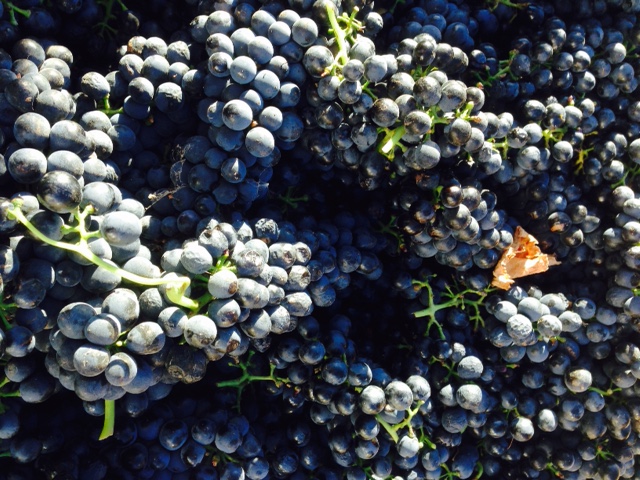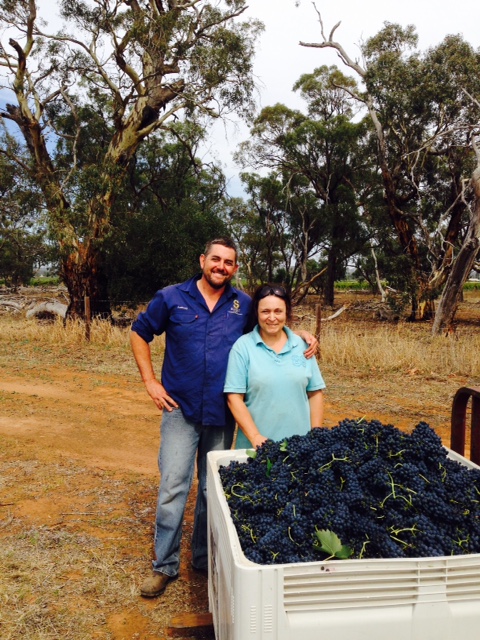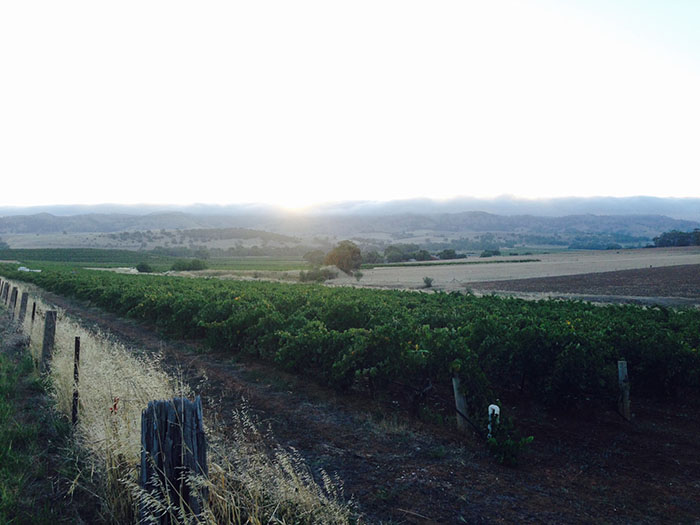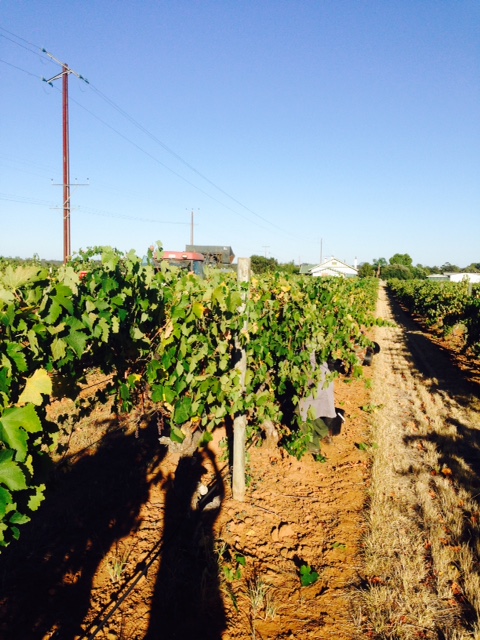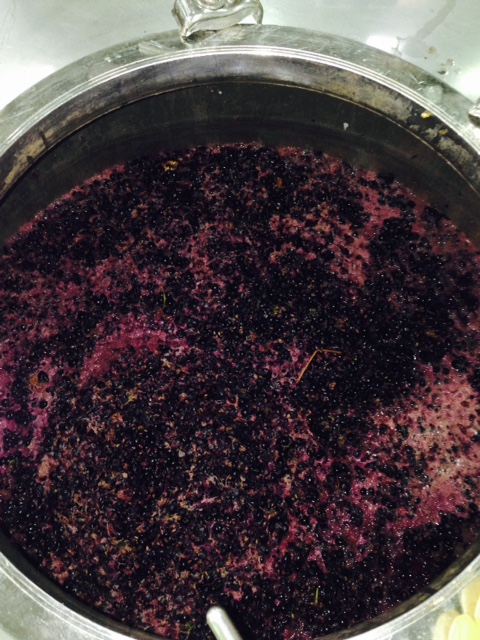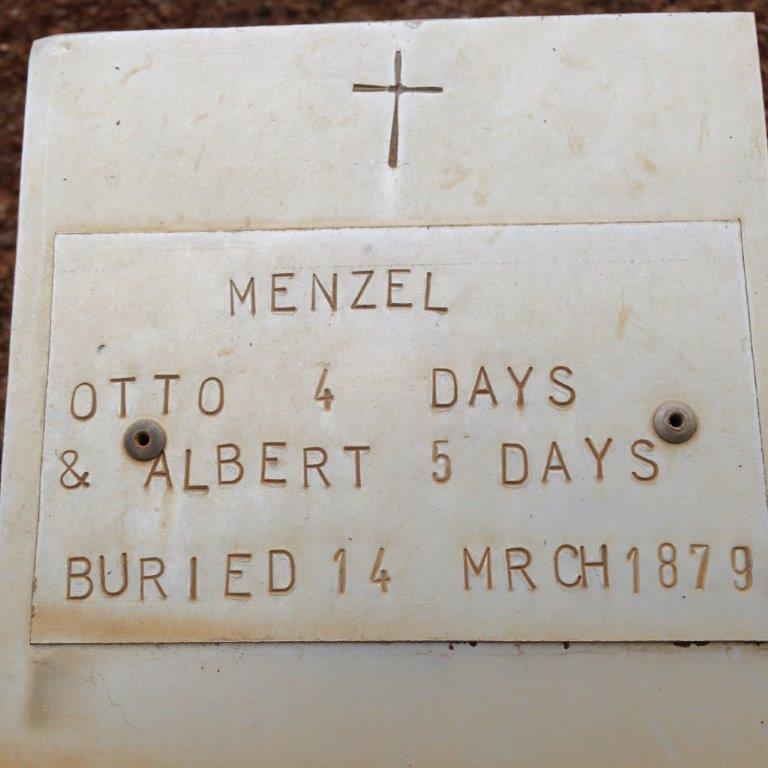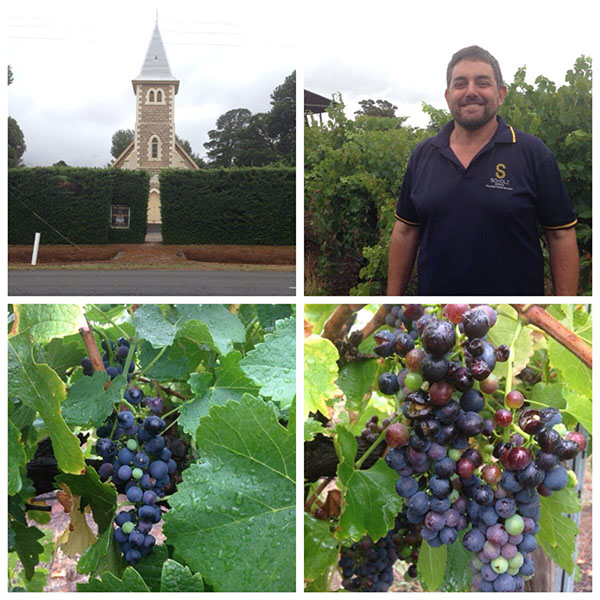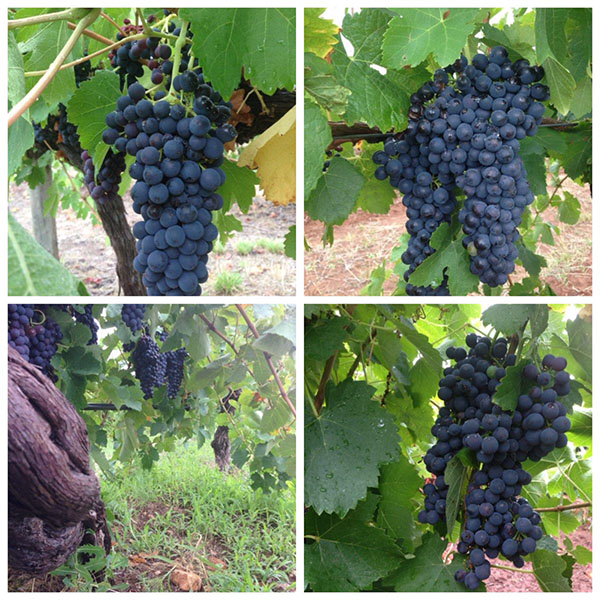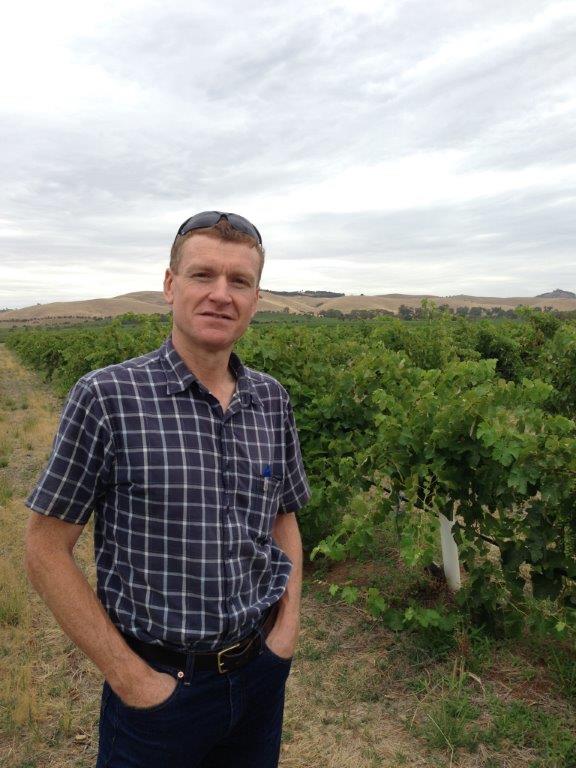Happy new (birthday) year!
Sparkling wine closure trial bottled
Haze-preventing enzymes approved for use in Australia and New Zealand
Vintage – a time to avoid taints and contaminations
Seeking wine samples – can you help with metals research?
Ever wondered what exactly is in your natural ferment?
NSW weather station network webinar
Events coming up
Staff achievements
Order the latest AWRI staff publications online
Acknowledgement
Happy new (birthday) year!
The AWRI wishes all eNews readers a happy new year and a successful 2015 vintage. During 2015 the AWRI will mark its 60th birthday and a number of celebrations are planned for the year. The first of these is the production of a one-off batch of commemorative wine in the 2015 vintage – in a project led by Peter Godden. You can follow the progress of the AWRI’s birthday wine via a blog on the AWRI website, which will tell the story of the wine from the vineyards through harvest, winemaking, packaging and beyond. Thanks are extended to all those who have helped with this project so far – in particular those who have pledged fruit.
Sparkling wine closure trial bottled
The AWRI’s commercial benchmarking trial for sparkling wine closures has officially started, with the bottling stage now complete. The study will apply a series of physical, chemical and sensory tests to a Premium NV Pinot Noir Chardonnay wine at regular intervals over an initial two-year period. A series of regional tasting workshops will also be delivered to showcase the development of the wine under the eight different closures in the trial.
The study aims to collect key performance data for the different closure technologies and to gain a better understanding of the commercial risks associated with sparkling wine for producers and suppliers.
The trial is being financially supported by both Australian wine producers and a range of international closure suppliers. A survey of Australian wine producers identified those closures that are of most interest for premium sparkling wines. The eight closures involved in the trial include traditional two-disc natural cork, agglomerate cork, screw-cap, crown seal and the Zork SPK Optimum.
The wine selected for the trial is a tank fermented sparkling wine made from Pinot Noir and Chardonnay, and this will be subjected to the following series of tests at five separate intervals over two years:
- Free and total sulfur dioxide
- Colour development
- Low molecular weight sulfur compounds
- Carbon dioxide retention
- Oxygen transmission rate
- Extraction force
- Sensory descriptive analysis
The AWRI intends to hold a number of tasting workshops in selected regions to showcase the wine’s development under the different closures. This will give small and medium wine producers opportunity to experience the sensory impact of closure choice firsthand. These workshops will aim to provide a generic overview of the trends seen throughout the trial at different points throughout the life of the trial. For more information, please contact Neil Scrimgeour on neil.scrimgeour@awri.com.au or 08 8313 6600.
Haze-preventing enzymes approved for use in Australia and New Zealand
Food Standards Australia and New Zealand (FSANZ) has approved the AWRI’s application to amend the Food Standards Code to include the enzymes Aspergillopepsin 1 and 2. This means that these enzymes can now be used in wine made and sold in Australia and New Zealand. This approval provides the Australian wine industry with an alternative to bentonite – the clay commonly used to remove haze-forming proteins from white, rosé and sparkling wines.
While bentonite is effective at removing proteins, its use results in significant wine losses. One study estimated the annual hidden cost of bentonite in the global wine industry at $1 billion dollars. The Aspergillopepsin 1 and 2 enzymes can be used to degrade haze-forming proteins in grape juice prior to fermentation, eliminating or reducing the need for bentonite. After the enzymes are added, the juice is heated for one minute which unfolds the heat-unstable proteins making them susceptible to enzyme attack. The juice is then cooled before being fermented as normal. The combined cost of the enzymes and juice heating step is considerably lower than the cost of the batch bentonite treatment used in all but the largest wineries.
Extensive sensory testing has shown no negative impacts from this treatment compared to standard industry bentonite use. Trials have been successfully carried out at laboratory, pilot, and winery-scale, with 5000 L volumes of Riesling, Chardonnay and Sauvignon Blanc treated at two wineries during the 2012 vintage, and fermented alongside 5000L batches of the same juices which received standard bentonite treatment. Those wines have recently been re-tested for heat stability, and in all cases the enzyme-treated portion and the equivalent bentonite-treated ‘controls’ remain stable according to the industry standard of a turbidity change on heating of less than 2 NTU (Iland et al. 2012).
As far as the AWRI is aware, the only current supplier of a preparation of these enzymes is the Japanese company Meiji Seika Pharma (http://www.meiji-seika-pharma.co.jp/english/), in a product called ‘Proctase’. While Proctase is the preparation used in the AWRI’s trials, it is important to note that the change to the Food Standards Code relates to the enzymes themselves and not to any commercial products. The AWRI advises, therefore, that as with all processing aids and wine additives, wine producers should seek assurance from their suppliers that products are compliant with the relevant food standards.
Winemakers interested in tasting the three commercial-scale Proctase-treated wines and their bentonite-treated equivalents, or in trialling Proctase during the 2015 vintage, should contact the AWRI. For more information, contact Peter Godden, Manager Industry Engagement and Application, AWRI on 08 8313 6600 or Peter.Godden@awri.com.au.
Reference
Iland, P., Bruer, N., Ewart, A., Markedis, A. and Sitters, J. 2012. Monitoring the winemaking process from grapes to wine techniques and concepts, 2nd Edition. Patrick Iland Wine Promotions Pty Ltd, Campbelltown, SA.
Vintage – a time to avoid taints and contaminations
No time is a good time to have to deal with taints or contaminations, but vintage is a particularly bad time for such problems. Preventative maintenance before vintage is an easy way to avoid most of the taints and contaminations that typically occur during vintage.
The table below shows the main taints and contaminations encountered during vintage, the typical associated source or winery process, and the preventative maintenance that can be performed to help avoid such problems.
| Taint or contamination |
Typical source/process |
Preventative maintenance |
| Refrigerant brines |
Must chilling, juice cold settling, fermentation tank cooling plates |
Inspect hoses for fraying and replace if necessary; check hose clamps are tight and replace if corroded |
| Hydraulic oil |
Mechanical harvesters and grape bin tippers |
| Aromatic hydrocarbons |
Paints, or paint thinners, used on grape bins and other transport vessels |
Make sure surface to be painted is prepared according to product directions, make sure the paint is allowed to dry and fully cure before use – at least seven days but preferably longer, especially during cool weather |
| Various (e.g. chloroanisoles and chlorophenols) |
Tainted additives or processing aids |
Conduct simple ‘soak and sniff’ tests to assess the potential of the additive to taint – more information on this can be found here |
Seeking wine samples – can you help with metals research?
The AWRI is seeking 12-bottle samples of wine of any vintage or variety, as part of a research project on the effects of metals on wine chemistry being carried out in conjunction with Charles Sturt University. Samples will be tested for the level and form of metal ions present, and will be monitored for changes over time. In return for donating wine, participants will receive information on the metal profile of their wine(s) as well as regular updates on the project. To contribute to this project or to find out more, please contact Dr Eric Wilkes on eric.wilkes@awri.com.au or 08 8313 6600.
Ever wondered what exactly is in your natural ferment?
AWRI Commercial Services is offering a new service which uses next-generation sequencing technologies to identify the dominant yeast species present in natural ferments. This service will provide insight into the microflora present during fermentation that may contribute characteristic flavours to wine. Read the natural ferments fact sheet for all the details or contact Dr. Tina Tran on tina.tran@awri.com.au or 08 8313 6600.
NSW weather station network webinar
Growers across NSW now have online access to data from a network of ten weather stations located in the Riverina and Mudgee. The weather stations log data at ten minute intervals, covering temperature, rainfall, humidity, solar radiation and leaf wetness. The data can be accessed in real-time from the AWRI website (https://www.awri.com.au/industry_support/weather-nsw/).
On Thursday 22 January at 10am SA time, a webinar will be presented to provide tips on accessing and interpreting data from the weather station network. Register here to attend. The weather station network is part of the NSW Viticulture Skills Development Program, funded by DPI NSW in partnership with the NSW Wine Industry Association and delivered by the AWRI. For more information about the program, please contact Darren Fahey on darren.fahey@dpi.nsw.gov.au.
Events coming up
3 February 2015
AWRI Grape and Wine Roadshow Seminar (Launceston)
Beautiful Isle Wines (formerly Elmslie Estate), Legana TAS
4 February 2015
AWRI Grape & Wine Roadshow Seminar (Hobart)
Pressing Matters Vineyard, Tea Tree TAS
5 February 2015
Flavour Development in the Vineyard Workshop (Yarra Valley)
Yarra Glen Memorial Hall, Yarra Glen VIC
10 February 2015
AWRI Adapting to Difficult Vintages Workshop (Geelong)
Deakin University – Geelong Waterfront Campus, Geelong VIC
Staff achievements
A number of staff achievements have occurred since the last eNews – including a PhD, an Endeavour Research Fellowship and the AWRI Innovation Awards.
Creina Stockley was awarded her PhD from Flinders University in December 2014. Creina was also recognised by the French government for her longstanding involvement with the Organisation Internationale de la Vigne et du Vin (OIV) by the awarding of the ‘La croix de Chevalier dans l ‘ordre du Mérite agricole’.
Cristian Varela has been awarded a 2015 Endeavour Research Fellowship that will support him conducting a 4-month ‘mini-sabbatical’ in Prof. Charlie Boone’s laboratory in Toronto, Canada, in 2015. Endeavour Scholarships and Fellowships are internationally competitive, merit-based scholarships provided by the Australian Government. This fellowship represents an exciting opportunity for Cristian to extend his research, while strengthening the AWRI’s links to Prof. Boone’s world-leading yeast genetics lab.
The AWRI also presented its annual innovation awards in December, this year in two categories – Academic Excellence and Process/Business Improvement. The winners were:
- Paul Smith, Keren Bindon, Stella Kassara, Ella Robinson, Neil Scrimgeour, Wies Cynkar and Bob Dambergs – for the development of a grape-based analysis to predict wine tannin
- Pamela Solomon and Natoiya Lloyd for implementing an intergroup consumable ordering strategy
Congratulations to all!
Order the latest AWRI staff publications online
Accessing the latest AWRI publications is easy. Visit the AWRI Publications web page to:
- View the 10 most recent AWRI staff publications and order the articles online from the AWRI Library
- Search the staff publications database
- Read the full-text of ‘Technical Notes’ from Technical Review (PDF format)
- Read the full-text of ‘AWRI reports’ published in Wine & Viticulture Journal (PDF format).
A full list of AWRI publications published since the last eNews is included below:
1673 Nordestgaard, S. Reverse racking and clarification. Aust. N.Z. Grapegrower Winemaker (610): 78-79; 2014.
1674 Scrimgeour, N., Bindon, K., Wilkes, E., Smith, P. Cynkar, W. Unravelling the relationship between grape and wine tannin and colour. Wine Vitic. J. 29 (6): 28-32; 2014.
1675 Smith, P., Day, M., Schmidt, S., McRae, J. Bindon, K., Kassara, S., Schulkin, A., Kolouchova, R., Wilkes, E., Herderich, M., Johnson, D. Exploring oxygen’s influence. Wine Vitic. J. 29 (6): 33-36; 2014.
1676 Dry, P. Verdejo. Wine Vitic. J. 29 (6): p. 55; 2014.
1677 Stockley, C. Ask the AWRI: Questions about drink driving. Aust. N.Z. Grapegrower Winemaker (610) p. 66; 2014.
1678 Marangon, M., van Sluyter, S.C., Waters, E.J., Menz, R.I. Structure of haze forming proteins in white wines: Vitis vinifera thaumatin-like proteins. PLoS One 9 (12): 21 p.; 2014.
1679 Bindon, K., Kassara, S., Hayasaka, Y., Schulkin, A., Smith, P. Properties of wine polymeric pigments formed from anthocyanin and tannins differing in size distribution and subunit composition. J. Agric. Food Chem. 62 (47) : 11582−11593; 2014.
1680 Contreras, A., Curtin, C., Varela, C. Yeast population dynamics reveal a potential ‘collaboration’ between Metschnikowia pulcherrima and Saccharomyces uvarum for the production of reduced alcohol wines during Shiraz fermentation. Appl. Microbiol. Biotechnol. DOI 10.1007/s00253-014-6193-6: 11 p.; 2014.
1681 Curtin, C.D., Pretorius, I.S. Genomic insights into the evolution of industrial yeast species Brettanomyces bruxellensis. FEMS Yeast Res. 14 (7): 997-1005; 2014.
1682 Holdstock, M. Ask the AWRI: The power of pH. Aust. N.Z. Grapegrower Winemaker (611), 72 p.; 2014.
1683 Scrimgeour, N., Wilkes, E. Closure trials demonstrate volatile sulfur compound formation. Wines Vines 95 (12): 64-69; 2014.
1684 Johnson, D. 2014 AWRI Report: New beginnings. Aust. N.Z. Grapegrower Winemaker (611): 4 p.; 2014.
Acknowledgement
The AWRI acknowledges funding from Australia’s grapegrowers and winemakers through their investment body, the Australian Grape and Wine Authority, with matching funds from the Australian Government. The AWRI is a member of the Wine Innovation Cluster in Adelaide, South Australia.
